A solar pile driver is a heavy machine that drives piles into the ground to support structures. The most common types are pipe, sheet, and H-piles. This guide covers the solar pile driver, its features, variations, construction methods, safety, maintenance, and everything else you need to know about this essential piece of equipment. So, keep reading!
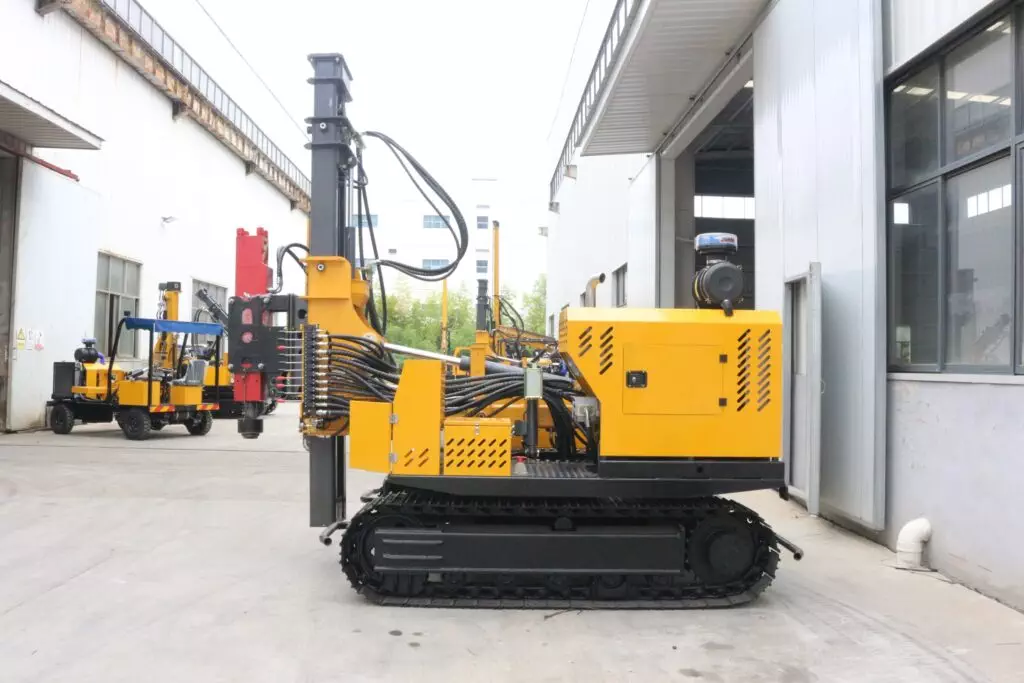
Understanding Solar Pile Drivers
A solar pile driver is essential for installing foundation posts, solar pile systems, highway guardrail programs, and vineyard guardrail installation programs. Piles can be driven entirely underwater or partially above ground as part of the finished, well-standing structure.
Moreover, they are renowned for their efficiency, speed, and accuracy, regardless of the job site terrain. It comprises four main components: the lead, cushion head, hammer head, and pile cushion. Each part plays a crucial role in transferring energy, guaranteeing they are standing securely in place, and showcasing the machine’s unique features.

- Lead: This support guides the hammer and piling. It can be fixed, left hanging, or swinging. The lead keeps the hammer and pounding in sync for a standing, stable pile.
- Hammer: A hammer acts as a shock absorber and is positioned between the helmet and the striker plate. It is usually constructed from man-made materials.
- Helmet: Helmet is a steel plate at the top of the pile. It protects the head of the pile during driving.
- Pile Cushion: A pile cushion is a buffer between the helmet and the pile. It is usually made from wood and supports the pile’s standing integrity.
Types of Solar Pile Drivers Variations
The evolution of pile machines has seen various types emerge, each suited to specific construction needs. Let’s have a look at these types!
- Diesel Hammers: It works like a large two-stroke diesel engine. The piston acts as the weight while the cylinder attaches to the top of the pile. The process begins by lifting the weight, which draws air into the cylinder where diesel is injected. As the weight falls, it compresses the mixture, causing ignition.
- Hydraulic Hammers: Hydraulic hammers are commonly used to drive steel pipes, timber, and precast concrete. They are considered more environmentally friendly than diesel and air hammers. For instance, HXR5 solar pile driver features a crawl-type walking system. Its pile driving height is 5000-6000mm making it best for pile ramming.
- Hydraulic Press-Ins: A solar pile driver presses piles into the ground using hydraulic rams. Press attachments adapt to conventional rigs, allowing for simultaneous pile pressing.
- Guide rails: Guide rails pile driving is a technique that employs rails to guide piles into position, thus allowing for accurate placement. It finds application in solar programs as it brings accuracy, stability, and speed to the pile-placing process ensuring durable foundations.
Pre-Operation Checklist and Safety Considerations
Before using the machine, it’s crucial to go through a pre-operation checklist to ensure a safe and efficient process. Here, we’ll guide you on what to do:
- Inspect the Attachment: Check the Solar Pro Pile Driver Attachment for damage or wear. Look for loose connections, hydraulic leaks, or other potential hazards that could compromise safety.
- Check the Hydraulic System: Ensure the hydraulic system functions properly and the fluid level is at the recommended level. This is crucial for the attachment’s performance.
- Check the Hammer: Inspect the hammer for damage or excessive wear. Also, ensure it’s properly attached to prevent accidents while in operation.
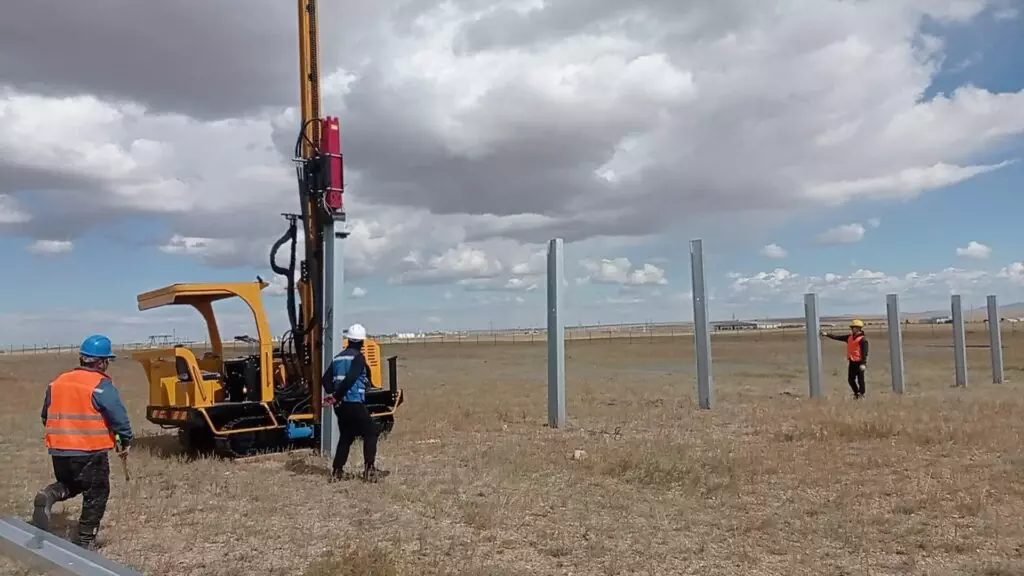
- Ensure Proper Balance: Verify that the attachment is properly balanced and securely attached to the host machine. It helps to prevent accidents or damage to the equipment.
- Familiarize Yourself with the Controls: Understand how the Solar Pro Pile Driver Attachment operates, including the controls and safety features.
- Wear Personal Protective Equipment: When operating the attachment, always wear personal protective equipment, such as hard hats, safety glasses, and gloves.
- Follow Manufacturer’s Instructions: Read and follow the manufacturer’s instructions for the Solar Pro Pile Driver Attachment and any local regulations or guidelines. Adhering to these instructions ensures safe and efficient operations.
Solar Pile Installations in the Solar Industry
In this section, we’ll guide you through four tips to ensure installation success during solar pile installations.
Foundation Preparation: The site must undergo extensive preparation before installing solar panels. This includes clearing debris, leveling the ground, and ensuring the soil is stable enough to support the height and standing of a pile.
Mounting Structure Installation: Mounting structures provide essential support to the solar project. Pile drivers securely position and anchor these structures to the piles, creating a stable base to withstand wind loads and soil movement.
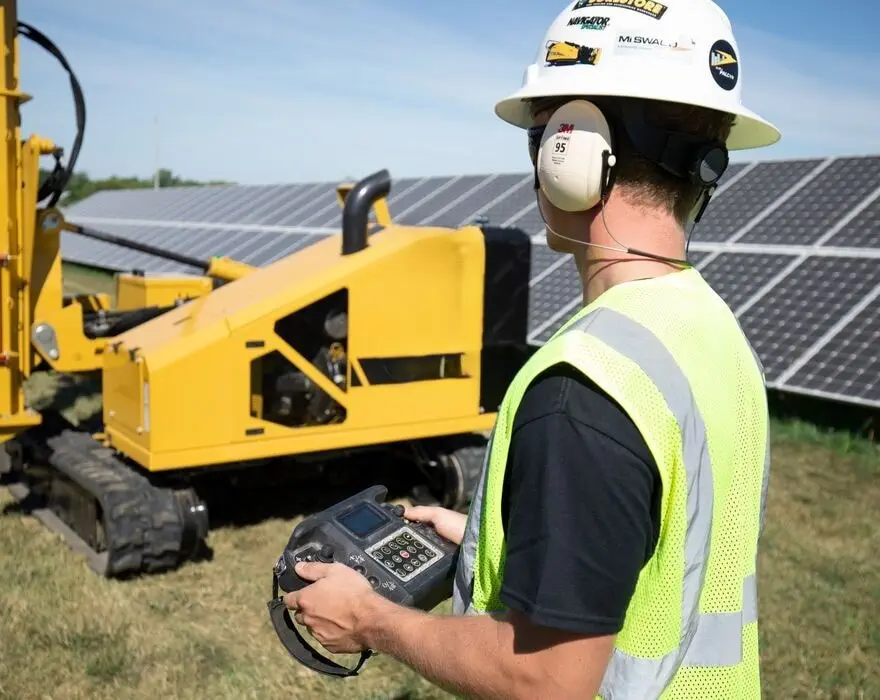
Maintenance and upgrades: Solar power plants require regular maintenance to ensure optimal performance. Pile drivers facilitate the easy replacement or addition of equipment during maintenance.
Environmental Consideration: Because solar power plants are eco-friendly, pile drivers are designed to minimize environmental impact. Most modern pile drivers employ hydraulic components that reduce vibrations and noise levels during operation.
Pile Driver Operations and Management
Effective pile drivers’ operation and management are crucial to safe and efficient construction. To ensure everything runs smoothly, operators must be well-trained and experienced. Running pile driver operations involves careful planning and execution. Before starting, the site needs to be thoroughly prepared. Then, pile drivers’ driving itself must be carefully monitored to ensure accuracy and safety.
Management is equally important. Keeping the equipment in top condition, tracking progress, and addressing any issues during construction are all part of the job. Effective management can help reduce costs, improve productivity, and enhance safety on the construction site.
Choosing the Right Pile Driver
Choosing the right pile driver is essential for the success of your project. Several factors come into play to ensure you get the perfect machine for the job. Here are five key considerations:
Type of Pile: The type and size of pile you will use in construction is one of the most critical factors when choosing a pile driver. For instance, a hydraulic hammer pile driver is suitable for driving steel H and concrete ones.
Project Size: Another crucial factor to consider when choosing a pile driver and manufacturer is the size of the project. A small pile driver machine may work perfectly for small programs, but for large-scale programs, you’ll need a larger machine capable of efficiently handling the increased workload.
Power Source: Pile driver machines can be powered by diesel, electricity, or hydraulic components. Each power source has advantages and disadvantages, depending on the project’s requirements, size and budget.
Noise and Vibration: Pile driver machines can generate significant noise and vibrations that can negatively impact the surrounding environment. Therefore, choosing a solar pile driver that does not negatively impact the environment is important.
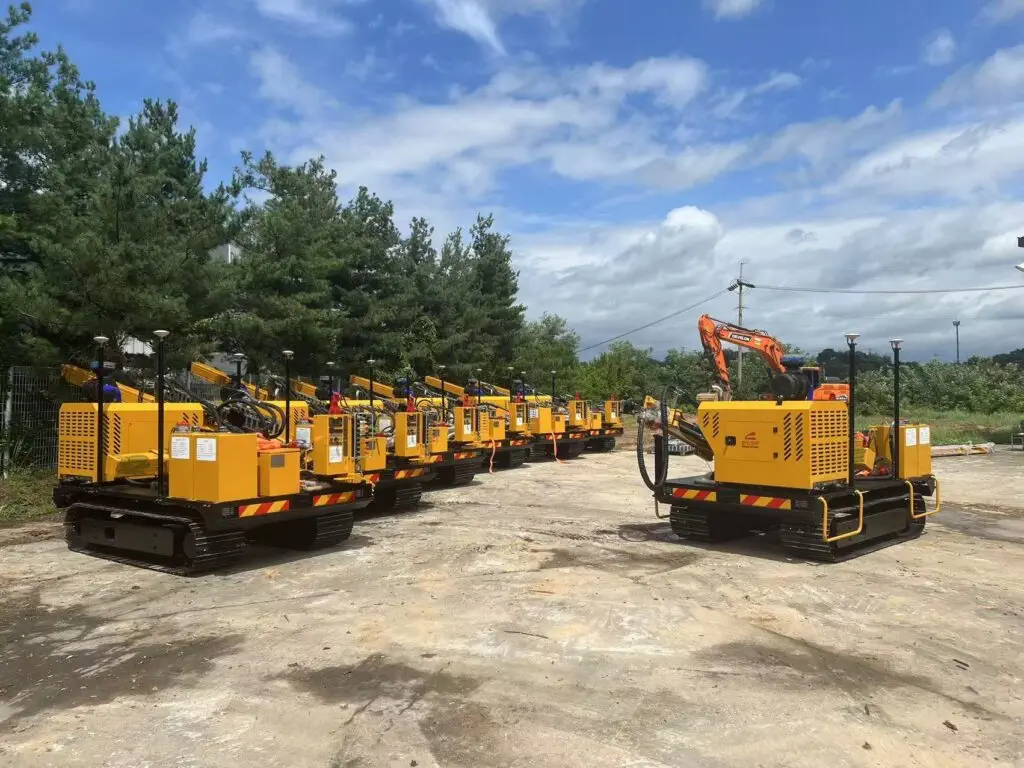
Advanced Pile Driving Techniques
When construction challenges get tough, advanced pile-driving techniques step in to make the job easier. Let’s explore some of these pile drivers and techniques and why they’re game-changers:
- Continuous Flight Auger (CFA) Piling: This technique minimizes soil disturbance and is ideal for clay or cohesive soils. The auger drills into the ground, and concrete is pumped through its hollow stem as it is withdrawn, forming a stable standing pile.
- Vibratory Piling: These machines use rapid vibrations to drive vertical columns into position, making them perfect for sandy or gravel soils.
- Spun and Helical Piles: They are often used to support existing structures or in job site terrain with limited spaces.
- Precast-driven piles: These are manufactured off-site and transported to the site. They ensure consistent quality and fast installation, which is ideal for programs with tight deadlines.
- Hydraulic Piling: Using hydraulic rams to drive vertical columns, this method offers precise control over the driving process and minimizes pile damage.
Common Pile Driver Applications and Industries
Pile drivers are extensively used in various construction programs, including buildings, bridges, the solar industry, and other infrastructure developments.
Construction Industry: Pile driving is extensively used in the construction of buildings, bridges, and other infrastructure programs.
Marine and Offshore Industry: Pile drivers are essential in marine and offshore applications, such as constructing foundations for piers, docks, and oil platforms. Steel or concrete piles are commonly used because they can withstand the harsh conditions of saltwater environments.
Transportation Sector: Pile drivers are crucial features in constructing bridges and overpasses. It creates stable foundations capable of supporting the weight of heavy traffic.
Renewable Energy Programs: Wind farms and solar installations rely on deep, standing foundations to support the weight and vibrations of turbines and solar panels. Pile drivers are crucial in creating stable, standing foundations for these renewable energy structures.
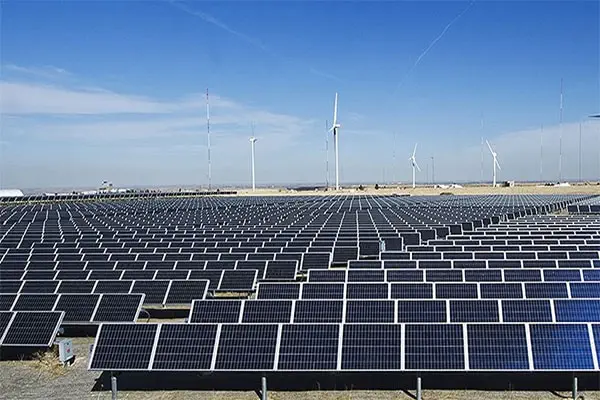
Civil Engineering and Infrastructure: Pile drivers construct retaining walls, sound barriers, and other civil engineering structures. This technique provides stability in challenging soil conditions.
Maintenance and Troubleshooting for Pile Drivers
Like any other construction equipment, solar pile driver machines require regular maintenance. Therefore, choosing a solar pile driver that is easy to maintain and repair is essential.
Regularly Inspect the Attachment
Scheduling regular inspections of pile drivers is crucial for identifying potential issues before they become major problems. Here are some essential maintenance practices:
- Lubrication: Proper lubrication of moving parts is vital for smooth operation. Follow the manufacturer’s guidelines to ensure the right type and quantity of lubricant are used.
- Air Filters: Regularly inspect, clean, or replace the air filters to prevent clogging. Clean air filters promote better combustion and improve overall performance.
- Fuel Filters: Periodically checking and replacing fuel filters is essential to prevent contaminants from reaching the engine.
- Belt Tension: It is crucial to regularly check and adjust the belt tension to prevent slippage and ensure optimal power transfer.
- Cooling System: It’s important to keep the system clean and debris-free. Regularly inspecting and cleaning the radiator fins helps maintain proper cooling efficiency.
- Inspections: Conducting routine inspections of the hammer’s components, including hoses, bolts, and connections, is crucial.
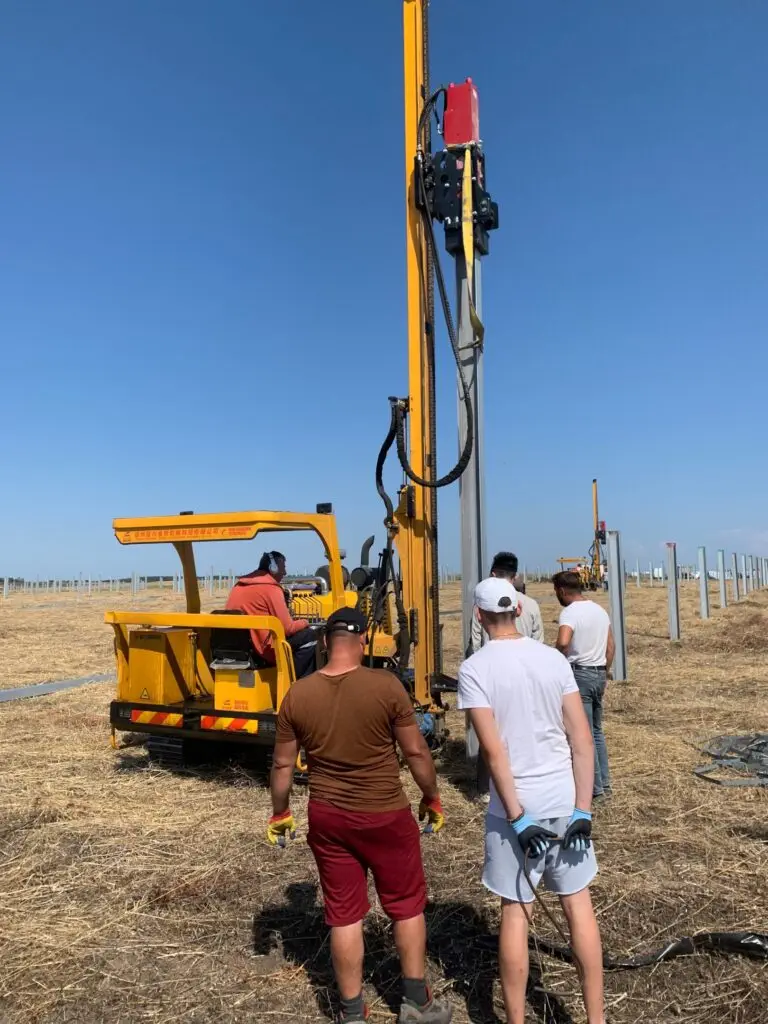
Proper Operation
Practicing the right techniques while operating a pile driver can minimize damage and prolong the machine’s lifespan. Here are some important habits to adopt:
Pre-Use Inspection: Before using the hammer, thoroughly inspect it to ensure it’s in good working condition. Look for any loose or damaged parts and fix them before beginning the operation of a pile driver.
Operating Conditions: Make sure to follow the manufacturer’s guidelines for operating conditions, which include recommended pile sizes, impact energy, and driving rates.
Warm-up and Cool-down: Let the machine warm up before applying full power and cool down after extended use. This practice helps prevent excessive wear and overheating of the engine, keeping the equipment in good condition.
Operator Training: Ensure operators are well-trained in operating and controlling pile drivers.
Troubleshooting
Quick troubleshooting can save you a lot of time and prevent further damage if you run into any issues. Here are some handy troubleshooting tips:
- Inspect Fuel System: If the hammer isn’t starting or losing power, inspect the fuel system. Issues such as clogged filters, fuel line blockages, or water contamination could be the source of the problem.
- Unusual Noises or Vibrations: If the hammer makes strange noises or vibrations while operating, stop immediately and check for any loose or damaged parts.
- Hydraulic System: Check the hydraulic fluid levels and look for leaks in hoses, fittings, or seals. Low fluid levels or leaks can affect the machine’s performance.
- Electrical System: Check out the electrical connections, battery, and fuses for any loose or damaged components.
- Vibratory Problems: If the hammer isn’t vibrating correctly, check the eccentric bearings, dampening blocks, and other vibratory components for any signs of wear or damage.
Best Practices for Efficient Use of Solar Pile Drivers
While pile driving procedures may appear intricate, their depth can be understood through the appropriate strategies of problem-solving techniques. Let’s have a look at these!
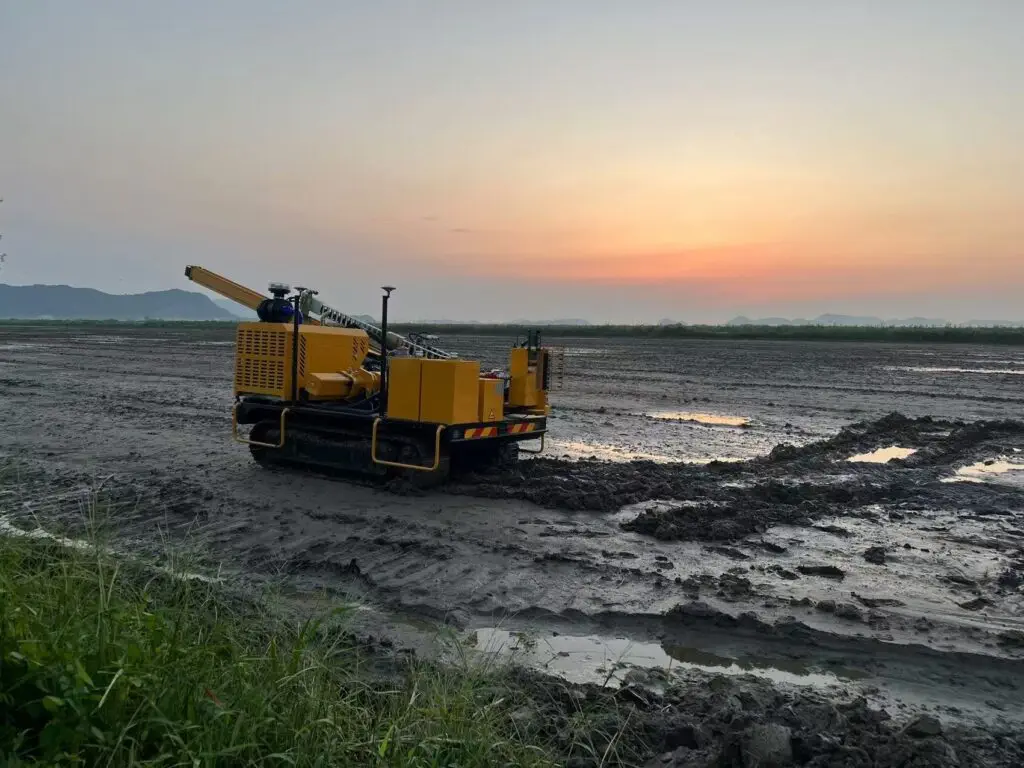
- Safety Rules to Adhere To
- Adequate Planning: Before installing any solar pile, it is essential to provide a blueprint of the entire construction plan while taking necessary factors into account.
- Safety Training: The allocated team for any project including solar construction should be trained in necessary safety protocols that can deal with any unwanted situation.
- Proper Equipment Maintenance: To ensure an uninterrupted constructional flow, regular maintenance of the solar pile equipment should be made mandatory. This includes inspecting the head of the hammer, assessing the hydraulic components, and replacing older systems.
- Use of PPE: Provide your team with basic Personal Protective Equipment (PPE). For starters, hard hats, steel-toed boots, gloves, and ear protection should be made into place.

Monitoring and Supervision: Solar Pile driving works with one supervisor or one monitoring throughout the process. In case there is a sudden change in the jobsite terrain conditions, the proper scope for adjusting plans needs to be made in order not to delay the schedule.
Environmental Considerations: Noise and vibration must be controlled in solar programs by applying appropriate techniques to the maximum. These are reduced and regulated by environmental policies.
Future Developments and Innovations
As technology evolves and sustainability becomes paramount, the piling industry is poised for transformation. Let’s examine the future trends shaping this vital sector.
Advanced Materials and Techniques: Traditionally, piling was about driving wooden, concrete or steel one into position. However, with advancements in materials science, we are seeing some new alternatives. For example, FRP ones are great because they offer superior corrosion resistance and durability, perfect for marine environments.
Automation and Robotics: Like in other industries, automation and robotics are causing a stir in construction. Robotic pile drivers with sensors and AI are doing the heavy lifting.
Green Piling Practices: As sustainability becomes the global buzzword, the piling industry is going green. Geothermal piling is another area of innovation. These techniques allow structures to tap into solar renewable energy from the earth, furthering the sustainability agenda in construction.
Digitalization and Data Analytics: Digitalization is changing the construction industry, and piling is no exception. AI-powered software can design piles, predict soil behavior, and plan programs. Real-time monitoring systems are also game changers for piles.
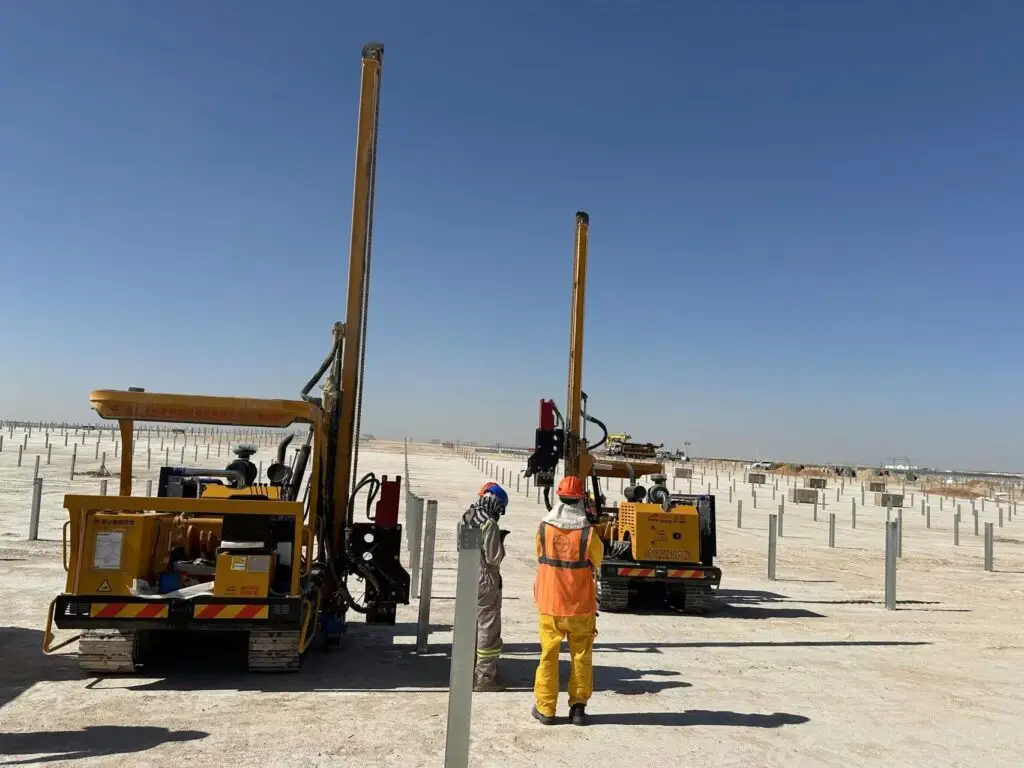
Conclusion
As construction methods evolve to meet new challenges, the role of piling rigs remains constant. Their ability to provide unmatched product support makes them indispensable for building a sustainable future. Adopting innovative technologies and staying ahead of trends in materials, automation, and sustainable practices will ensure the stable standing of the piling industry and ensure it continues to meet future demands.
Visit Everstar Machinery for more information on solar pile drivers. Discover the innovative solutions we offer to ensure efficient, sustainable, and reliable foundation work. Contact us today for unmatched product support and to learn how our state-of-the-art equipment can meet your specific needs.
